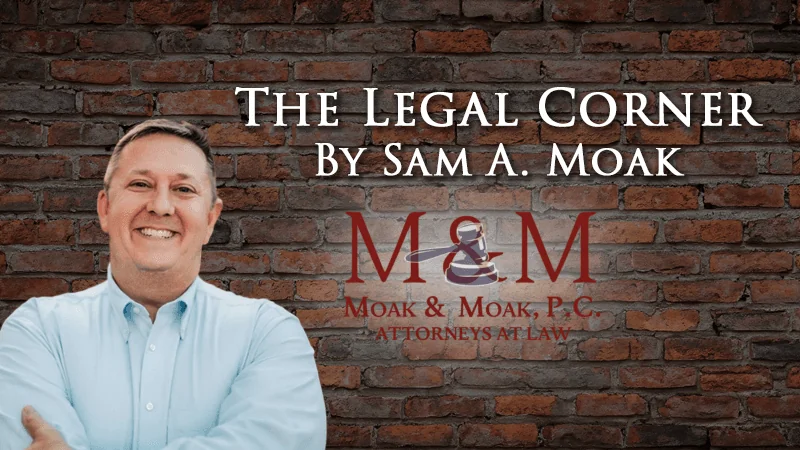The information in this column is not intended as legal advice but to provide a general understanding of the law. Any readers with a legal problem, including those whose questions are addressed here, should consult an attorney for advice on their particular circumstance.
Several years ago, my family took a trip to New York City. While there the boys and I visited Central Park, a wonderful 843 acres of landscaped greenery in the middle of Manhattan. I was curious as to how Central Park was created and found it to be a good educational opportunity for the boys.
Central Park was the first landscaped public park in the United States. While the original advocates of creating the park were wealthy merchants and landowners, they wanted the park to give New York an assist similar to public grounds in London and Paris to establish an international reputation. An additional benefit would offer their own families an attractive setting for relaxation in the center of the city instead of saloons.
Thinking a generous benefactor had set aside the area for a park long ago to preserve some of the area, I was surprised to find it was originally formed through eminent domain. Can you imagine today's uproar if someone decided to establish 843 acres of land for a public park on I-45 through eminent domain? Yes, I realize State Park is just south of town on I-45. However, it was not formed through eminent domain. In the early 1930s, Walker County residents decided they needed a park and approved the sale of $20,000 in bonds to buy the land, and then donated it to the State Parks Board. The Civilian Conservation Corps company began construction of a dam, group recreation hall, and boat house in 1937, and also completed a frame pump house, stone culverts, and stone road curbing..
Today there is a state program, using tax incentives to help preserve historic working farm and ranch lands. Originally, the Texas Farms and Ranch Lands Conservation Program was established by the Texas Legislature in 2005 to preserve agricultural lands in Texas. As I am sure you already know, rural and agricultural land is disappearing faster in Texas than anywhere else in the country.
Originally the General Land Office managed this program, but in 2015, the Program was moved to the Texas Parks and Wildlife Department for agricultural conservation easements. Tex. Parks and Wildlife Code §84.001 Additionally, the Texas Natural Resources Code §183.001 establishes what may be a conservation easement to protect natural, scenic or open space property. Both codes work by providing funds to nonprofit entities, usually land trusts, to purchase conservation easements. The conservation easement is a permanent easement limiting the use of the property. Depending on the desired goal, the conservation easement would be established under the proper code.
If the goal is to establish an agricultural conservation easement, then it must be on qualified land and have an additional purpose such as preserving a natural resource, or scenic or open space. To qualify for the agricultural conservation easement, the land must currently be devoted principally to agricultural use to the degree of intensity generally accepted in the area (farming, ranching, timber, or forest products).
Many families that have been in farming or ranching for generations are faced with gift and/or estate tax implications when passing large amounts of land used in farming and ranching to their children. However, in exchange for signing the conservation easement and promising not to develop the land, the families could receive a tax relief that allows them to pass the property to the next generation and not have to sell.
The benefits not only pass to the families wishing to preserve their historic way of life, but it also maintains a beautiful setting it what may become a metropolis someday. Because of the conservation easement, even if the property is no longer farmed or ranched, it will remain undeveloped.
Another important benefit may be the preservation of a watershed. Many of us take for granted the quality of water we get from our faucets. As more and more land disappears to developments, the ability for rain water to filter through the soil before running off into our rivers and lakes is hampered.
The final benefit may be the opportunity to display a way of life that is disappearing. I am amazed each year at the Walker County Fair PreK and Kindergarten Days how many children have never seen a cow, horse, chicken, pig or other animal. While they may have heard or read about one, there is something different and valuable about actually seeing one live. I believe the same holds for timberlands and farmlands. Reading about how our ancestors timbered or farmed the land becomes more real when you visit a working timber plantation or farm.
Entering a conservation easement is not suited for everyone. You must have enough land and the desire to preserve something, But, if you have a family ranch or farm you wish to preserve, it would be worth your time to look into the Texas Farms and Ranch Lands Conservation Program further to see if it fits.
Sam A. Moak is an attorney with the Huntsville law firm of Moak & Moak, P.C. He is licensed to practice in all fields of law by the Supreme Court of Texas, is a Member of the State Bar College, and is a member of the Real Estate, Probate and Trust Law Section of the State Bar of Texas. www.moakandmoak.com ©


